The expression “up the creek without a paddle” exists for a reason—your paddle is just as important as your boat, if not more so. And yet, though many kayak anglers put a great deal of consideration and capital into picking a fishing kayak, their choice of paddle is very often an afterthought, influenced mostly by what their remaining funds can procure and what’s within sight on the shop floor.
It’s time to change this imprudent approach to choosing a paddle. Getting a paddle that suits you and your kayak will make your kayak angling experience more enjoyable, offer better boat control, and allow you to save your energy for what really matters: reeling in that lunker.
Top Picks: Best Fishing Kayak Paddles for 2024
The following fishing kayak paddles have received the highest star ratings by reviewers in our Kayak Angler Buyer’s Guide. See and review all fishing kayak paddles here.
Best Fishing Kayak Paddles
Shop Fishing Kayak Paddles
The links below will take you to our comprehensive Kayak Angler Buyer’s Guide, where you’ll find all the best fishing kayak paddles on the market, including reviews, ratings and where to buy.
You can choose to filter fishing kayak paddles by shaft and blade material, shaft type, feather angles, blade style and more to find exactly what you’re looking for quickly.
Shop by shaft type
Shop by shaft material
Shop by feather angle
Shop by blade material
Shop by blade style
Shop by price
Shop by brand
Shopping for a Used Fishing Kayak Paddle?
Have you seen an awesome deal on a paddle on Facebook Marketplace? Or maybe your local guide company is selling off some inventory or the paddling club is having a garage sale. Inflation is on what seems to be a never-ending rise—buying a gently used paddle is a great way to save some cash, especially if you can barter well. We won’t judge if you choose to “reinvest” that money you’ve saved into more fishing gear.
When shopping for a used fishing kayak paddle, here are a few things to look out for:
- Hairline cracks or fractures in the blade or shaft. These will only get worse with use and time. Be cautious when deciding to make a purchase, or barter accordingly.
- Holes or punctures in foam core paddles. Unless repaired properly, your paddle may absorb water and your ultralight paddle will feel like you’re swinging a brick around.
- Warping or delamination of materials. This will affect performance and cadence. At best it will be annoying, at worst it will feel unusable. Make sure to check out the paddle from all angles and in good lighting.
- Gouges or blunt force damage. Hitting the blade off rocks, using it like a shovel or resting it continually in the dirt will cause premature wear and tear. Just like cracks, it’s only going to get worse. Wood slivers in your finger are not a fun experience. Fiberglass or carbon splinters are even worse.
Finally, one of the best things you can do when purchasing a paddle off a stranger—just like a car—is take it for a spin. Meet the seller at a local water body, in a public area for your safety, and try it out beforehand to make sure it will work for your needs.

Fishing Kayak Paddle Buying Advice
Paddle Length
The length of your paddle can mean the difference between an enjoyable or tiring day on the water. Get something too short and you’ll be reaching across your body and exerting more energy than needed on every stroke. Get something too long and you’ll have an overly relaxed stroke and may find it hard to get the power you need, when you need it.
What length of paddle is best depends on your height and the width of your kayak. Most kayak fishing paddles are adjustable or a set length between 240 and 260 centimeters. This is a suitable range for most paddlers and kayaks—though those paddling sit-inside or narrow sit-on fishing kayaks may want to go shorter, and those taller than six feet, four inches who are using a wide fishing kayak in a raised seating position may want to go longer.
Wherever possible, borrow, rent or demo paddles to determine what length will work best for you. Start with a 250-centimeter paddle length. If you find yourself stretching to reach either side during your stroke, you may be better suited to a slightly longer paddle. If your paddle blades are completely submerged with each stroke along with some of the shaft, your paddle is most likely too long and something shorter would be beneficial. If you aren’t sure what set length to get, an adjustable paddle will take the guesswork out and will work for most people in the majority of boats.
| Kayak Width | |||
| Paddler Height | 22”–29” | 29”–34” | 34”+ |
| 5’–5’6” | 220–230 cm | 230–240 cm | 240–260 cm |
| 5’6”–6’ | 220–230 cm | 230–240 cm | 250–260 cm |
| 6’+ | 220–230 cm | 230–240 cm | 250–260 cm+ |

Materials
What your paddle is made of can affect its performance dramatically. Blades and shafts come in a variety of materials and, in some cases, a blend of a few different materials.
Typically, carbon fiber and fiberglass blades are lighter and stiffer, while plastic/nylon blades tend to be slightly heavier while being more flexible and budget-friendly. The same is true of shafts, but the differences are not as noticeable.
Why does stiffness matter? A little flex is okay and helps mitigate stress on the arms and shoulders. But if the shaft or paddle blades are too flexible, some of your energy will go into flexing the paddle instead of moving the boat. Stiffer paddles equal better energy transfer. Hydrodynamics is fun, folks.
What about weight? Overall weight and paddle swing weight (think: blade weight) can be important because the lighter your paddle is, the less energy it takes to move through the entire paddle stroke, reducing both arm and overall fatigue.
These energy savings may not be noticeable on a quick 20-minute jaunt down the river, but on a full day or weeklong trip, the hours and energy add up.
| Material | Pros | Cons |
| Carbon fiber (blades/shafts) | Ultralight, stiffest of them all | Most expensive, harder to repair |
| Fiberglass (blades/shafts) | Mid-range price, lighter than plastic or aluminum, durable | Heavier and more flexible than carbon |
| Plastic/nylon (blades) | Budget-friendly, many color options, more prone to damage | More flexible and heavier |
| Aluminum (shafts) | Budget-friendly, durable | Cold to touch, heavier, rattles more |
Blade Shape & Size
Paddle blades come in many different shapes and sizes. As a general rule, bigger blades mean more power but also require more energy, while smaller blades mean less power but an easier stroke.
There are two main categories of paddle blades: high-angle and low-angle. Choosing between a high-angle and low-angle paddle will depend on your paddling style, arm strength and the boat you use.
High-angle paddle blades are shorter and wider and are used when more power is necessary, such as in whitewater and touring settings where a strong stroke is needed to immediately avoid obstacles or purposely hit features. The more powerful stroke high-angle blades produce works great with heavier fishing kayaks on both rivers and lakes to move you quickly when needed. You’ll need a slightly longer high-angle paddle than would be used in other genres of kayaking, though, to accommodate the modern fishing kayak’s width and seat height.
Low-angle paddles are longer and skinnier bladed than their high-angle counterparts. Their length keeps more of the blade in the water during a more relaxed stroke. Typically they are used with recreational or touring style kayaks.
There is no clear-cut definition that makes a paddle fit into the high- or low-angle categories. There are big and small high-angle paddles, big and small low-angle paddles, and paddles that could be referred to as crossovers. Finding the shape and size that works best for you will come from having on-water experience with different blade shapes.
Feathering
Most paddles have a mechanism called a ferrule for adjusting the angle of the paddle blades against each other, commonly referred to as feathering or offset. Buying a paddle with feathering is a matter of personal preference.
Feathering can affect arm and wrist comfort during long days on the water, especially when paddling into the wind. When a paddle’s blades are offset, the blade that’s out of the water is positioned at an angle that cuts through the wind, rather than catching it. Figuring out what angle you prefer will require some on-water trial and error time. The most common offset angles are 15, 30 and 60 degrees.
Shaft Shape & Size
Standard paddle shafts are straight with a diameter of approximately three centimeters; this diameter is suitable for most paddlers. Some brands offer an even smaller shaft diameter for young people or those with smaller hands.
Bent shaft paddles—which are most commonly composite—have a long-standing history in the whitewater and touring worlds and are increasingly being utilized by kayak anglers. These paddles have two bends on either side of the shaft, like a weightlifter’s curling bar. When you hold the paddle in the areas between the bends, it gives you a more relaxed hand position which reduces the stress on your wrists and joints. Bent shaft paddles cap out at 250 centimeters so are best suited to sit-inside or smaller sit-on-top fishing kayaks.

Price
Typically, a set length entry-level fishing paddle with a fiberglass shaft and plastic (nylon) paddle blades will be between $80 to $220 depending on ferrule type and if there’s any carbon blended into the shaft or blades. Adding an adjustable length feature to a fishing kayak paddle will bring you closer to the $200 mark.
When you move up to lighter and stiffer composite paddles—fiberglass and carbon blades—the price increases significantly. Quality stiffer fiberglass bladed paddles with a carbon shaft will bring you north of the $300 mark and a nice stiff full carbon setup can be anywhere between $350 and $500 or higher, depending if it has a bent shaft or a foam core style blade.
Anything below $70 will typically have an aluminum shaft with a push-button ferrule and a thinner, more flexible plastic blade. These aren’t the greatest paddles out there, but they will work if that’s all your budget allows.
A great tip for saving your dollars with paddle shops is purchasing in the offseason. The best deals can be found in late fall and winter when items go on clearance to make way for new models coming out next season. Yes, I know, you won’t be able to use it right away if you live in the north like me, but good deals are hard to pass up. It’s also the best time of year to look at used gear, when rental companies may be clearing out old stock to replace with new the following year.
Where to buy
Should you shop at a specialty paddling shop or a big box store? You’ll notice a difference between the two in terms of the in-store knowledge, selection of brands, and the types of paddles available.
Box stores typically have one or two paddling brands they deal with. This means they usually have less selection and will tend to carry more budget-minded rather than performance-oriented paddles. The staff at box stores are assigned departments to work in, so the knowledge base of the guy selling you a kayak paddle will be split between everything from camping gear to ice skates to bikes. Of course, it doesn’t hurt to ask if there’s an experienced paddler on staff who can chat with you.
Many people start out with budget gear to get started on the water and upgrade as their budget, needs, fishing and paddling style grows. The most important thing when buying from a box store is making sure you take the initiative to learn what safety gear and information you’ll need when paddling.
Conversely, staff at a paddling specific shop will know exactly how to outfit you and what information a new paddler needs to know to stay safe—as well as comfortable and having a good time on the water. They’ll be able to help you find a paddle that is tailored to your paddling style, needs and budget. The store itself will also offer more selection across the board.

Fishing Kayak Paddle Reviews
Help narrow your search for the perfect fishing kayak paddle by reading our expert reviews.
- Kayak Fishing Paddles From Bending Branches
- New Werner Paddles For Kayak Fishing
- Bending Branches’ Redesigned Paddles
- Werner Releases Redfish Paddle
- Paddles for Power: Accent Robert Field Signature and Bending Branches Angler Rise
- Accent’s new Hero Angler: Great Paddle, Great Cause (VIDEO)
- Fresh Catch: Backwater Assassin Paddle
- Fresh Catch: Werner Paddles’ Jackson Kayaks-Limited Edition
Not pictured: the three miles he paddled to get to this spot. | Feature photo: Travis Melanson


-first_product_gear.jpg)
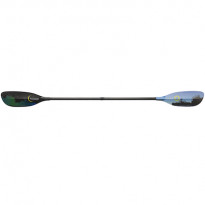
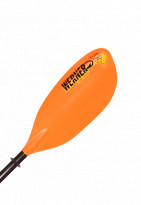

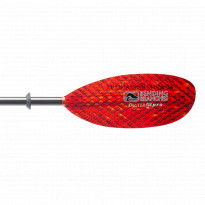
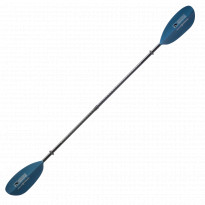

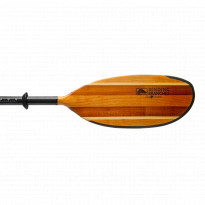
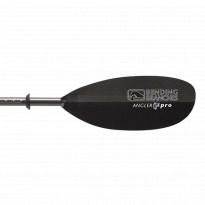
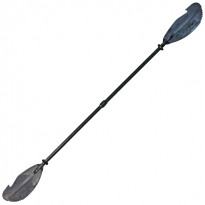
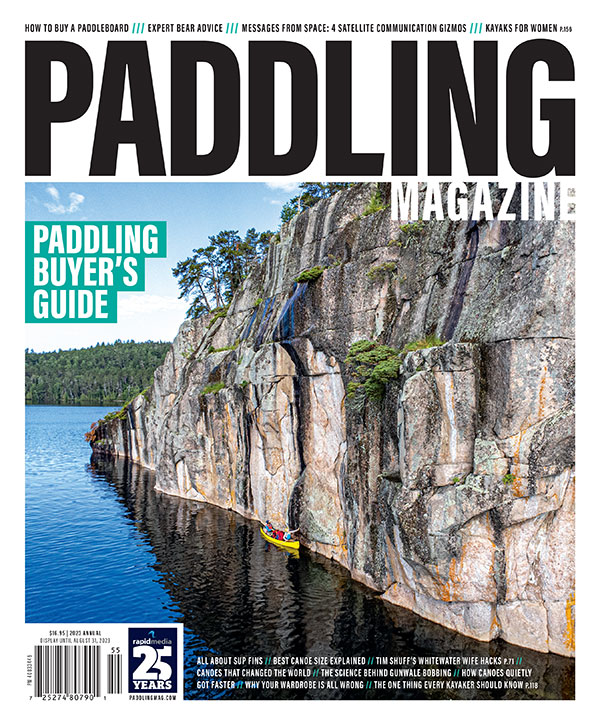 This article was first published in the 2023 Paddling Buyer’s Guide.
This article was first published in the 2023 Paddling Buyer’s Guide. 